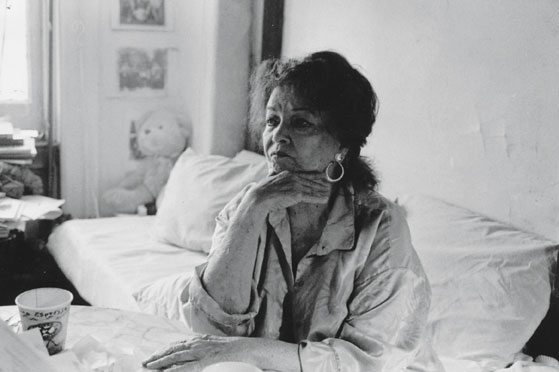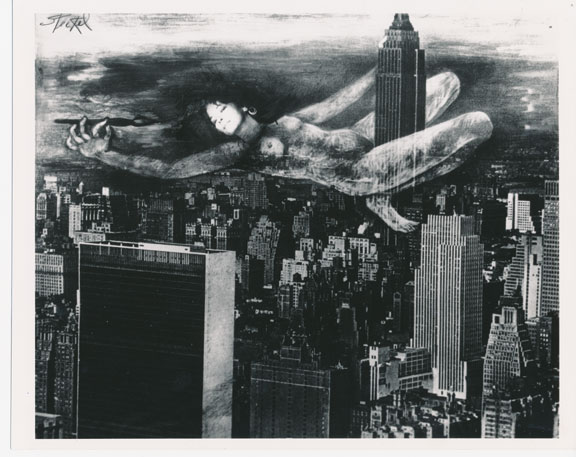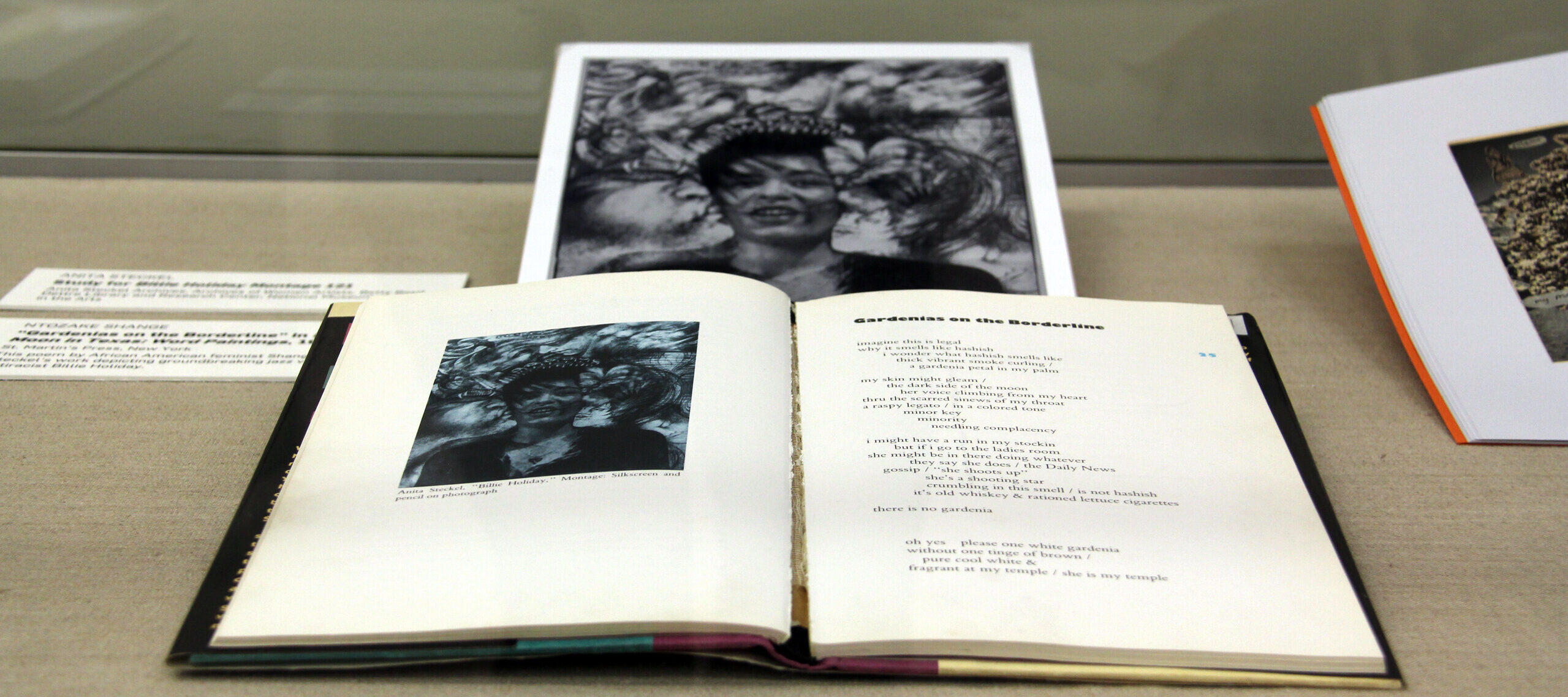According to materials from the archive of artist Anita Steckel, before she revealed her solo exhibition The Sexual Politics of Feminist Art at Rockville Community College in 1973, a female faculty member cautioned her. The woman said that if she wished to receive a teaching job at the college, she should leave any erotic artwork out of the show.

Steckel, who had hoped that attention from the exhibition would lead to a job offer, considered the warning but decided not to censor herself. Her decision did create a strong reaction from the faculty, but, unfortunately for the progressive artist, it was not a positive one.
While several critics condemned her work as pornographic, Steckel used erotic imagery to illustrate heterosexual female desire and provide her own interpretation of previous art featuring nudity, especially art by men featuring women. In her “Giant Woman” series, a nude female figure confidently treks through New York City, even hanging from the Empire State building.
Another groundbreaking piece, which Steckel actually handed out during the show, was Legal Gender (1971). The Photostat handouts consisted of a penis drawing within copies of a one-dollar bill. Steckel used phallic imagery to draw attention to male privilege and the pay gap between men and women in the workforce, still an issue today.

Steckel’s provocative work caused a scandal in the community. John Komar, a Rockland County Legislator, demanded that Steckel’s exhibition be closed or relocated to “a more appropriate building on campus such as . . . the men’s or women’s restroom.” In response, Steckel founded the Fight Censorship Group with several prominent female artists, including Louise Bourgeois and Hannah Wilke. A press release from the group stated its purpose: denouncing the double standard in the artistic community between sexualized men and women.
The group worked toward establishing the right of women artists to use the nude male figure and sexual subject matter in their art because both are natural parts of life. The group disbanded around a decade later, but it played an essential role in creating a more accepting environment for women’s provocative works.
On view now in NMWA’s Betty Boyd Dettre Library and Research Center, a selection from the Anita Steckel Papers displays art, photographs, and personal papers of the artist, highlighting her bold, feminist art.
